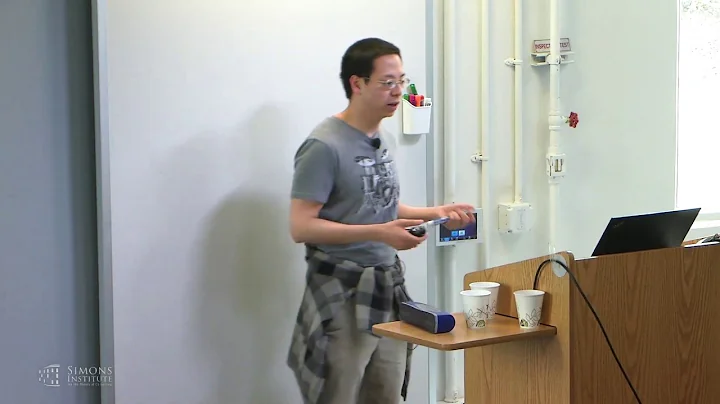Raymond D Pedrizetti
age ~69
from Sammamish, WA
- Also known as:
-
- Raymond Dav Pedrizetti
- Raymond Im Pedrizetti
- Raymond Raymond Pedrizetti
- Raymond B Pedrizetti
- Ray D Pedrizetti
- Ray B Pedrizetti
- Raymond I
- Phone and address:
-
4101 Lake Sammamish Pkwy, Redmond, WA 98075
(425)3921634
Raymond Pedrizetti Phones & Addresses
- 4101 Lake Sammamish Pkwy, Sammamish, WA 98075 • (425)3921634
- Bellevue, WA
Work
-
Position:Building and Grounds Cleaning and Maintenance Occupations
Education
-
Degree:High school graduate or higher
License Records
Raymond David Pedrizetti
Address:
4101 E Lk Sammamish Pkwy SE, Sammamish, WA 98075
License #:
A5117413
Category:
Airmen
Us Patents
-
Solid-State Memory Device That Emulates A Known Storage Device
view source -
US Patent:6574588, Jun 3, 2003
-
Filed:Sep 23, 1998
-
Appl. No.:09/159522
-
Inventors:Daniel Shapiro - Redmond WA
Raymond D. Pedrizetti - Issaquah WA -
Assignee:Microsoft Corporation - Redmond WA
-
International Classification:G06F 9455
-
US Classification:703 24, 703 25, 709321, 709325, 709326, 709327, 710 8, 710 10, 710 13, 710 14, 710 63, 710 72, 710 73, 710 74
-
Abstract:The present invention is directed to a peripheral device that integrally provides a program relating to the peripheral device, and may be connected to a computer system. The peripheral device includes a peripheral function subsystem for providing a peripheral device functionality. The peripheral device further includes a solid-state memory device storing a program relating to the peripheral device in a format used by disk drives. When the peripheral device is connected to a computer system, the program stored in the solid-state memory device is immediately available, and can be read by the computer system as though it was stored on a disk drive connected to the computer system.
-
Smart Hibernation On An Operating System With Page Translation
view source -
US Patent:6609182, Aug 19, 2003
-
Filed:Jan 20, 2000
-
Appl. No.:09/488271
-
Inventors:Raymond D. Pedrizetti - Issaquah WA
Pierre-Yves Santerre - Bellevue WA -
Assignee:Microsoft Corporation - Redmond WA
-
International Classification:G06F 1200
-
US Classification:711159, 711133, 711162, 711165, 713 1, 713300, 713323
-
Abstract:A duplicate memory image of the pages that need to be saved (i. e. hibernated) is created within volatile memory. The pages to be hibernated include all pages whose state is locked and a portion, if not all, of the pages whose state is idle. If the duplicate memory image of the pages to be hibernated cannot, however, be created due to a lack of volatile memory, a portion of the idle pages is pushed out to the swap file on secondary storage to free more volatile memory for this duplication. This duplicate memory image of the pages to be hibernated along with a corresponding page table identifying their location within volatile memory are then written out to a file on the secondary storage, completing hibernation and allowing the computer system to shut down in a hibernate mode.
-
Determining Update Availability Via Set Intersection Over A Sub-Optimal Pathway
view source -
US Patent:6789255, Sep 7, 2004
-
Filed:Sep 26, 2000
-
Appl. No.:09/670116
-
Inventors:Raymond D. Pedrizetti - Issaquah WA
Scott D. Quinn - Issaquah WA
Timothy W. Bragg - Redmond WA -
Assignee:Microsoft Corporation - Redmond WA
-
International Classification:G06F 944
-
US Classification:717169, 717170, 717171
-
Abstract:A low bandwidth link can be used optimally for software updates, by successively transferring more information about the updates only as the likelihood of an applicable update successively increases. A many-to-one mapping function (e. g. a hash function) is applied to update identifiers on a server to generate a table of single bit entries corresponding to the updates. At a client, the same mapping function is applied to program identifiers to determine whether the server has a potential update. If a potential update is noted, a second transmission is requested for conveying additional data from the server by which hash collisions can be identified. A third transmission from the server is received conveying the actual update only after the availability of an actual update (versus a hash collision) is confirmed. The same arrangement can be employed in reverse.
-
System And Method To Automate The Management Of Computer Services And Programmable Devices
view source -
US Patent:7065740, Jun 20, 2006
-
Filed:Apr 23, 2002
-
Appl. No.:10/128062
-
Inventors:W. Jeff Westerinen - Sammamish WA, US
James R. Benton - Seattle WA, US
Mukesh Karki - Issaquah WA, US
Alan R. Morin - Kirkland WA, US
Raymond D. Pedrizetti - Sammamish WA, US
Thomas C. Phillips - Bellevue WA, US
Kartik N. Raghavan - Seattle WA, US
Paul Sutton - Seattle WA, US
Curt Steeb - Redmond WA, US -
Assignee:Microsoft Corporation - Redmond WA
-
International Classification:G06F 9/44
-
US Classification:717101, 717102, 717107
-
Abstract:An apparatus and method to automate the deployment, provisioning, and management of a programmable device for the life cycle states of the programmable device is presented. The system includes an automation interface for a developer to develop modules to aid in the automation of the deployment, provisioning, and management of the programmable device and for a user to direct the system to enter into a state of the life cycle. A controller moves the programmable device into states of the life cycle in response to triggering events occurring.
-
Solid-State Memory Device That Emulates A Known Storage Device
view source -
US Patent:7233890, Jun 19, 2007
-
Filed:Jun 2, 2003
-
Appl. No.:10/449085
-
Inventors:Daniel Shapiro - Redmond WA, US
Raymond D. Pedrizetti - Issaquah WA, US -
Assignee:Microsoft Corporation - Redmond WA
-
International Classification:G06F 9/455
G06F 7/00 -
US Classification:703 24, 703 13, 703 21, 703 23
-
Abstract:The present invention is directed to a peripheral device that integrally provides a program relating to the peripheral device, and may be connected to a computer system. The peripheral device includes a peripheral function subsystem for providing a peripheral device functionality. The peripheral device further includes a solid-state memory device storing a program relating to the peripheral device in a format used by disk drives. When the peripheral device is connected to a computer system, the program stored in the solid-state memory device is immediately available, and can be read by the computer system as though it was stored on a disk drive connected to the computer system.
-
Managing Multiple Devices On Which Operating Systems Can Be Automatically Deployed
view source -
US Patent:7290258, Oct 30, 2007
-
Filed:Jun 25, 2003
-
Appl. No.:10/607115
-
Inventors:Curt A. Steeb - Redmond WA, US
Munisamy Prabu - Redmond WA, US
Zeyong Xu - Issaquah WA, US
Martin L. Holladay - Bremerton WA, US
Paul C. Sutton - Seattle WA, US
Raymond D. Pedrizetti - Sammamish WA, US -
Assignee:Microsoft Corporation - Redmond WA
-
International Classification:G06F 9/445
G06F 9/44 -
US Classification:717178, 717168, 717172, 717173, 717174, 717177
-
Abstract:Multiple devices on which operating systems can be automatically deployed are managed. According to one aspect, an apparatus manages installation of operating systems on a plurality of computing devices. The installation is performed across the plurality of computing devices both concurrently and asynchronously.
-
Using Task Sequences To Manage Devices
view source -
US Patent:7814126, Oct 12, 2010
-
Filed:Jun 25, 2003
-
Appl. No.:10/607054
-
Inventors:Munisamy Prabu - Redmond WA, US
Michael J. Gallop - Sammamish WA, US
Raymond D. Pedrizetti - Sammamish WA, US
Curt A. Steeb - Redmond WA, US
Zeyong Xu - Issaquah WA, US
Paul C. Sutton - Seattle WA, US
Martin L. Holladay - Bremerton WA, US -
Assignee:Microsoft Corporation - Redmond WA
-
International Classification:G06F 7/00
G06F 17/30 -
US Classification:707804, 717176, 717178
-
Abstract:Task sequences are used to manage devices. According to one aspect, a user-defined or user-selected task sequence is received. The task sequence is converted into an ordered series of steps, and the series of steps are performed, in accordance with their order, in managing a device over a network. In certain implementations, the ordered series of steps are steps for automatically deploying an operating system on the device.
-
Task Sequence Interface
view source -
US Patent:8086659, Dec 27, 2011
-
Filed:Jun 25, 2003
-
Appl. No.:10/607411
-
Inventors:Curt A. Steeb - Redmond WA, US
Raymond D. Pedrizetti - Sammamish WA, US
Munisamy Prabu - Redmond WA, US
Zeyong Xu - Issaquah WA, US
Martin L. Holladay - Bremerton WA, US
Paul C. Sutton - Seattle WA, US -
Assignee:Microsoft Corporation - Redmond WA
-
International Classification:G06F 15/16
-
US Classification:709201, 717171, 717172
-
Abstract:According to one aspect of task sequence interfaces, a method includes exposing an interface that allows task sequences to be performed on a plurality of remote devices, and receiving requests regarding the task sequences and the plurality of remote devices via the interface. The interface comprises an object model including device objects that represent physical devices in a network, and jobs objects that represent task sequences performed on one or more of the plurality of remote devices.
Name / Title
Company / Classification
Phones & Addresses
Principal
Ralou Farm LLC
General Crop Farm
General Crop Farm
4101 E Lk Sammamish Pkwy SE, Redmond, WA 98075
Youtube
Mylife

Louise Pedrizetti Sammam...
view sourceMarian Pedrizetti Norma Pedrizetti Raymond Pedrizetti Betty Pedrizzetti Dana Pedrizzetti
Get Report for Raymond D Pedrizetti from Sammamish, WA, age ~69





